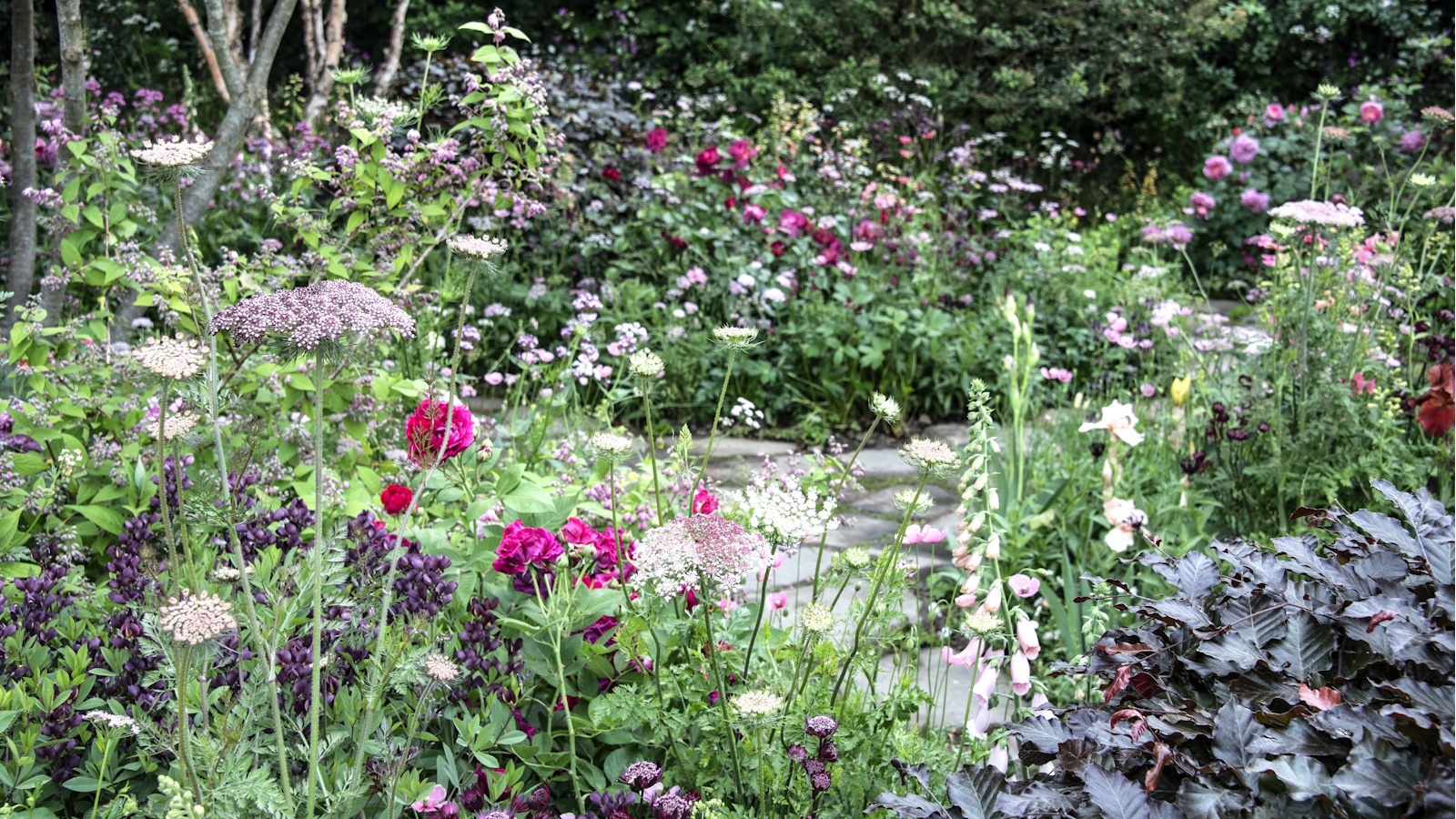
If you're looking to add a little ethereal beauty as well as height and movement to your garden, umbellifer plants are the answer. With their delicate, umbrella-like blooms and airy silhouettes, these flowers bring an effortless sense of romance to borders and beds.
If I were planning a bed from scratch, I would always make sure to add a few lace-like umbellifer varieties to dance and sway above the more focal blooms growing lower down. I also grow several of these species in my cut flower bed, as the umbellifer forms are perfect for adding to natural and organic-style floral arrangements.
But their appeal isn’t purely aesthetic. Umbellifers are also pollinator magnets, making them a favorite among wildlife garden ideas. From the soft lacy domes of Ammi majus to the bold architectural presence of fennel and cow parsley, there’s an umbellifer for every style of garden. In this guide, I explore the best varieties to choose and how to grow them in your yard to full effect.
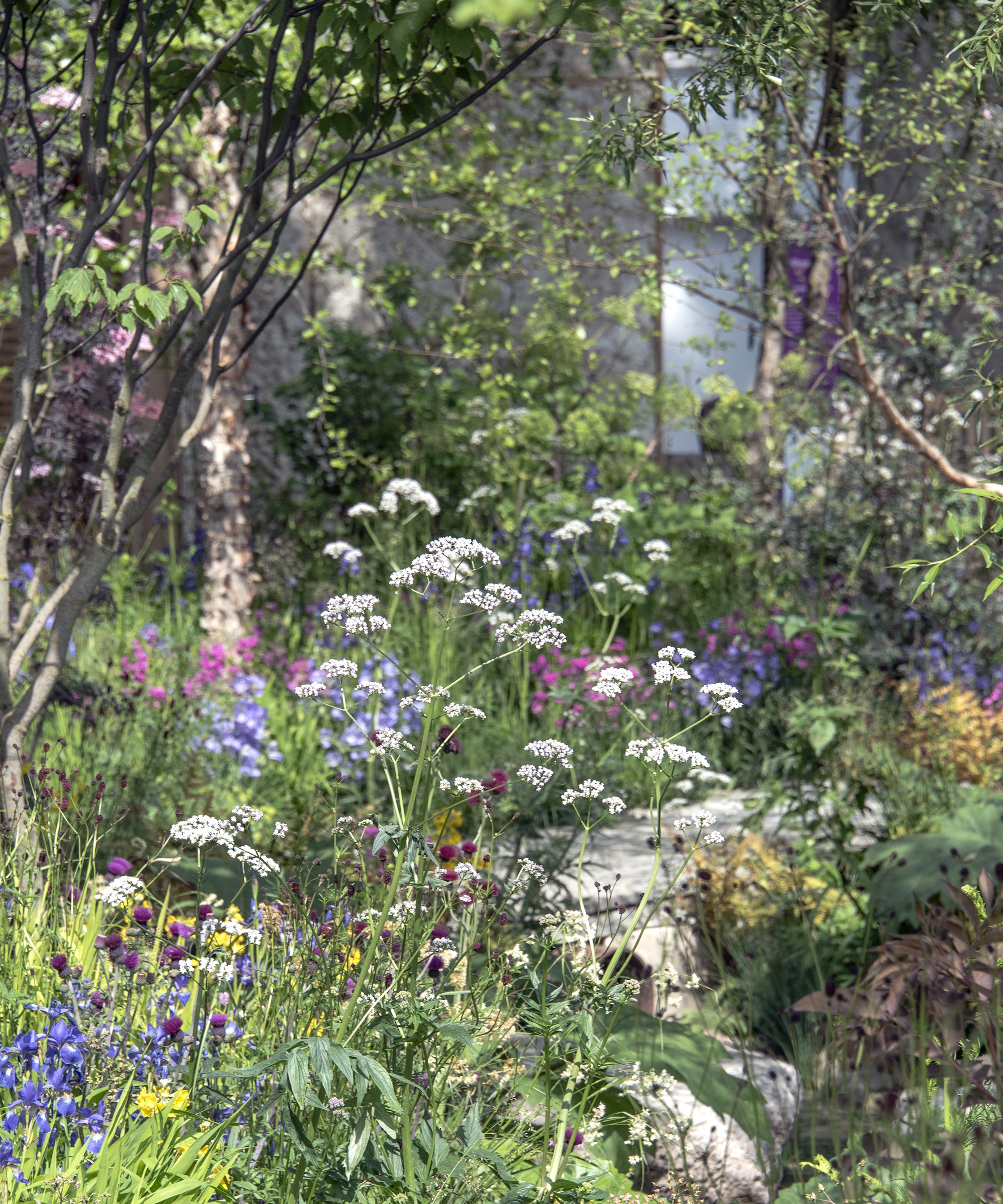
5 of the best umbellifer plants
Umbellifer plants and flowers belong to the Apiaceae family.
Their collective name comes from the flat, disc-like shape of their flower heads, known as umbels. There are a few exceptions to this, however, such as sea holly, or Eryngium, which has a spiky thistle-life form.
1. Daucus carota

Daucus carota, also known as wild carrot, is a biennial umbellifer plant producing finely divided foliage and delicate white umbels that often feature a single dark floret in the center.
It prefers full sun and well-drained soil, and will self-seed readily if left to do so.
I grow this in my cut flower patch, and always opt for the 'Dara' variety, which produces dark burgundy and pink flower heads, adding an interesting and more sophisticated shade to my planting schemes and bouquets. I always find it super easy to grow and very reliable as a cut flower. You can find a similar darker-flowering Daucus seed variety from Amazon.
Hardiness: USDA zones 3–9
2. Orlaya grandiflora

Commonly known as laceflower, Orlaya grandiflora, is one of my absolute favorite annuals and umbellifer plants to grow. I am obsessed with it's delicate flower heads, resembling lace napkins and bonnets.
An annual native to southern Europe, it produces bright white umbels and flowers over a long period of time, from May onwards in my cutting patch. It grows on surprisingly tall and sturdy stems, making it an excellent ingredient for softening larger cut arrangements.
I usually start seeds in the fall and overwinter them somewhere warm to get a head start on the next growing season.
Hardiness: Best in USDA zones 6–9.
3. Pimpinella major ‘Rosea’
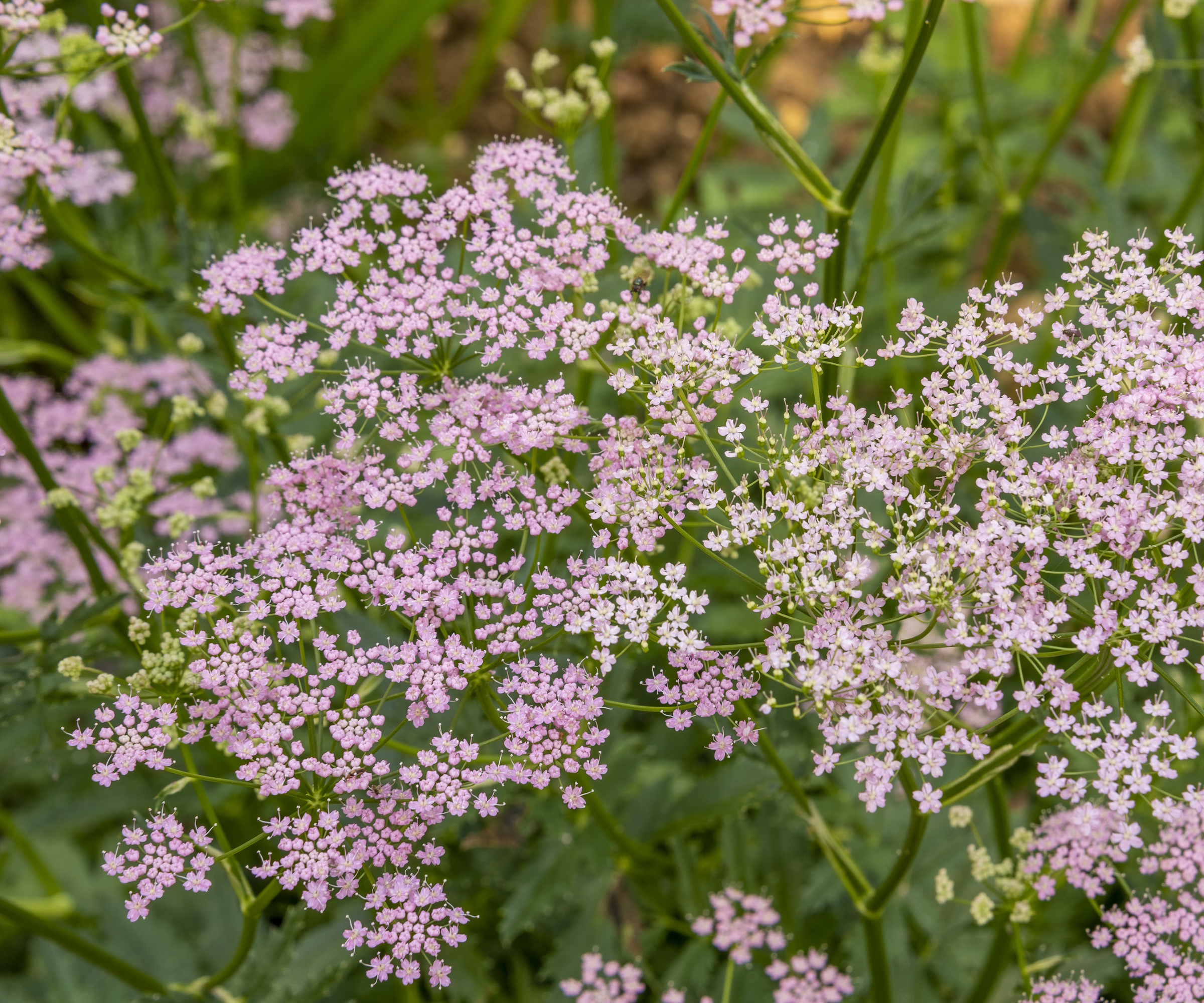
Pimpinella major ‘Rosea’ is a herbaceous perennial, very similar to cow parsley in appearance but with soft pink blooms that fade as the summer goes on, making it much more attractive to grow in my opinion.
It is tolerant of partial shade, would look perfect in the middle of a border within a cottage garden planting scheme, and prefers moist but well-drained soil.
A different umbellifer in the same Pimpinella plant genus is Pimpinella anisum, or anise (available from True Leaf Market), an umbel herb with a strong liquorice flavor and is great for growing in containers.
Hardiness: USDA zones 4–8
4. Ammi majus
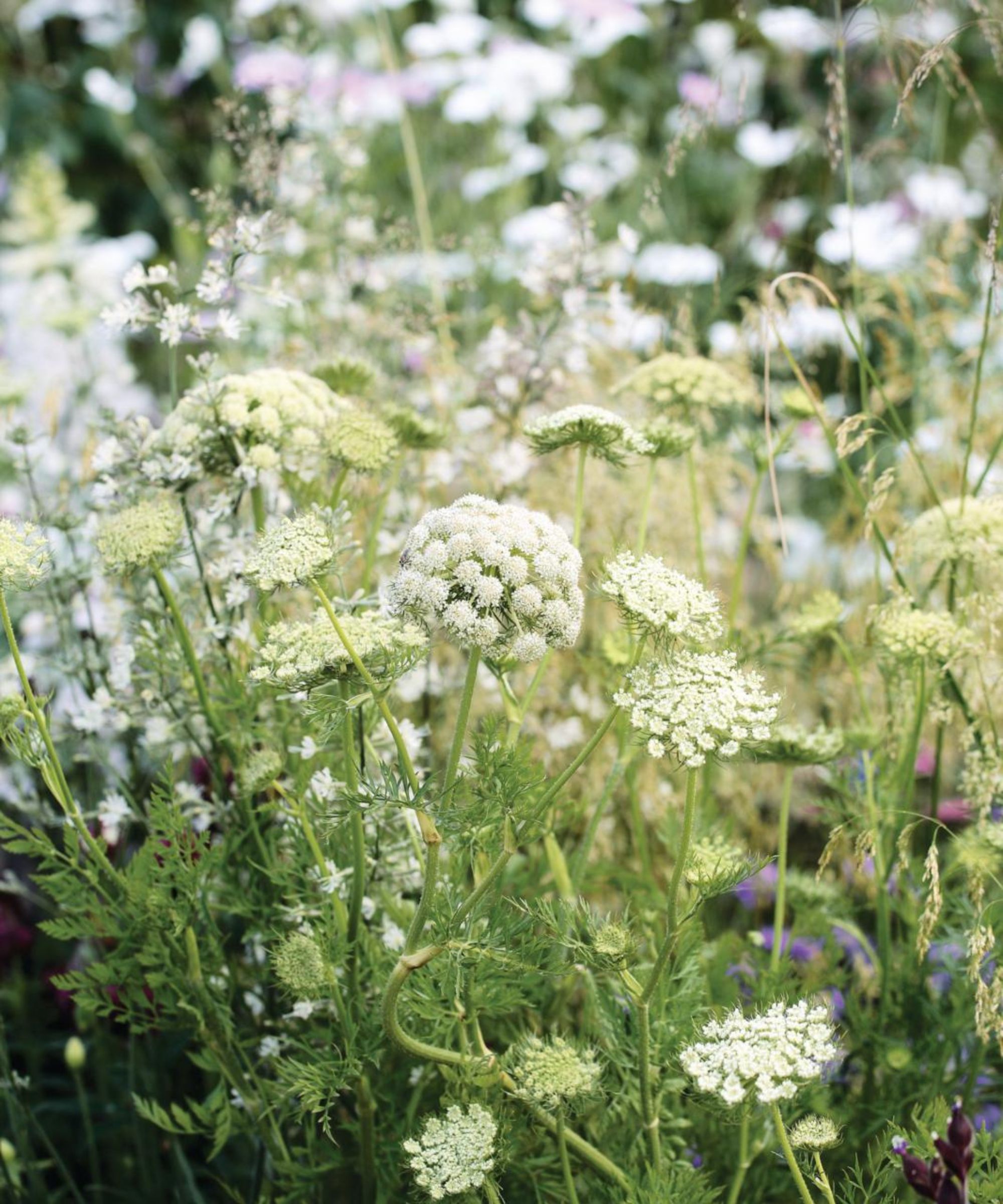
Often confused with cow parsley (Anthriscus sylvestris), Ammi majus is a most commonly grown as a hardy annual that produces large, frothy white umbels and finely toothed foliage.
Also known as Bishop's flower, it’s often used in floristry as a more refined alternative to Queen Anne’s Lace.
I direct sow ammi into my cutting beds, as it seems to grow much better for me this way than if I try and start seeds in trays. I always try to sow in late summer, too. In fact, it is one of the best flowers you can sow in August to get early blooms the following spring.
Hardiness: USDA zones 5–9
You can find Ammi majus seeds available from Walmart.
5. Foeniculum vulgare
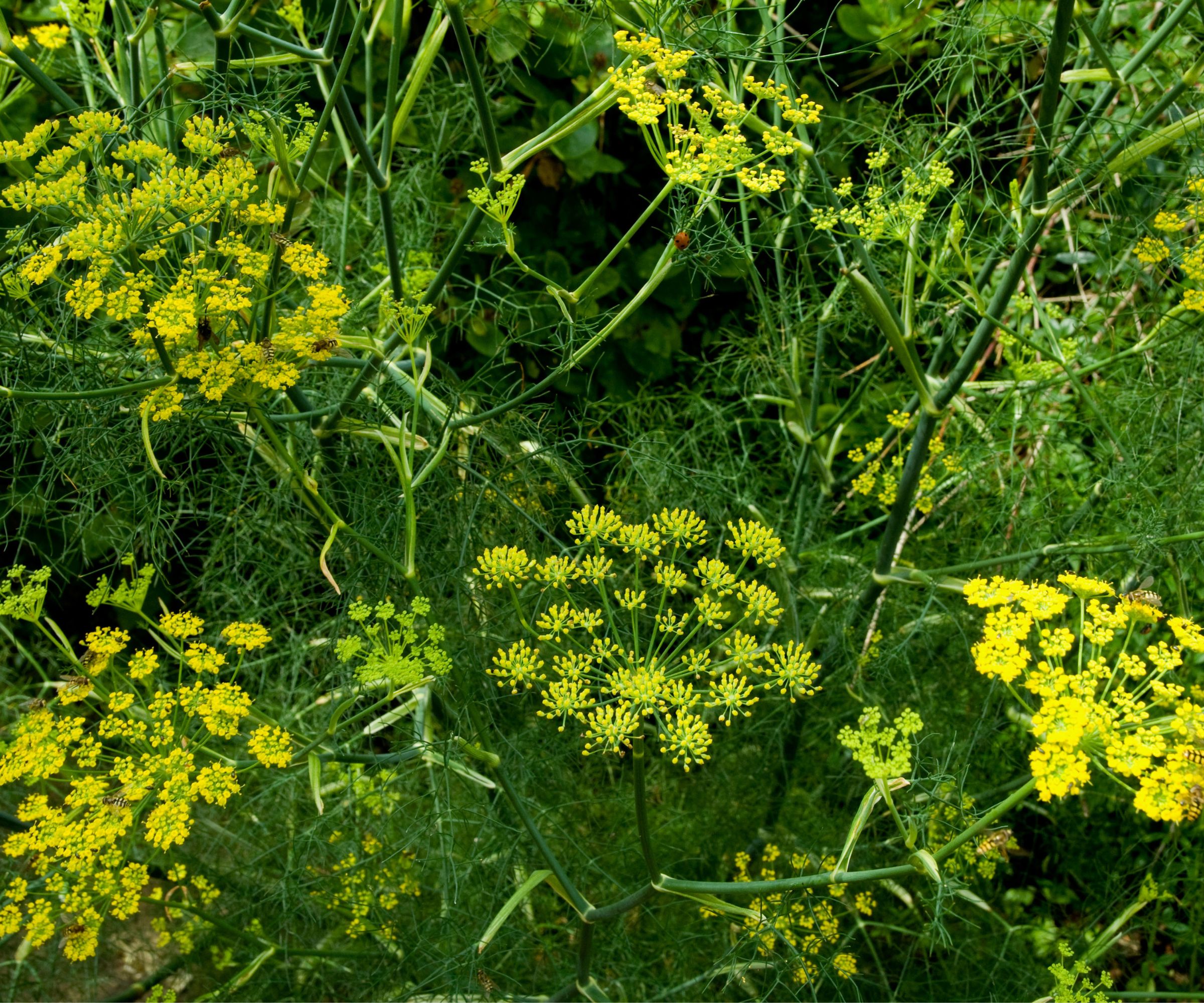
A towering, aromatic perennial with feathery foliage and yellow flowers, wild fennel is both ornamental and edible. It can grow to a height of more than 70 inches, and can bring naturalistic drama to any flower bed. It prefers full sun to grow to its full potential.
Its anise-scented foliage brings texture and scent to gardens. I would always recommend deadheading fennel or picking it to dry the stems, as otherwise it will self seed and has a tendency to take over.
You can find hugely attractive bronze fennel seeds at True Leaf Market.
Hardiness: USDA zones 4–9
There is something truly magical about umbellifer flowers. They way they attract pollinators and dance in the garden quite unassumingly, but with such grace and beauty. I could not be without them, and love what they bring to my romantic garden ideas.







